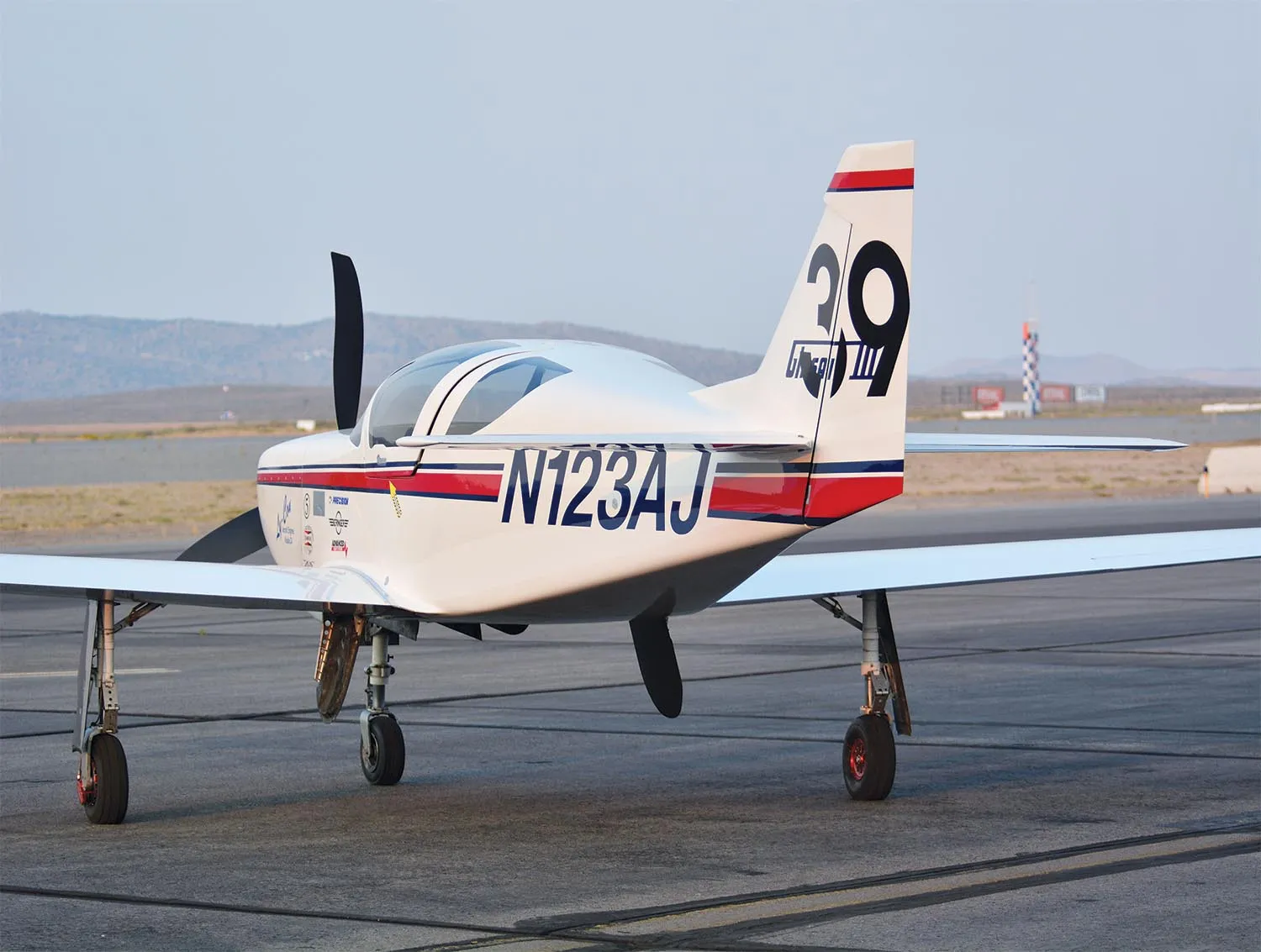“Some wounds never heal, and for me it was the Honda Mini Trail I couldn’t have,” says seven-time Reno Sport class champion Jeff LaVelle. “It was $280 back then and it might as well have been $280 million.” And so began Jeff’s obsession with speed and freedom and winning and, eventually, airplanes. He couldn’t swing that little Mini Trail burning a hole in his heart as a boy and it’s been bugging him ever since. “Yeah, fill that damn hole up with stuff you don’t need.”
At least Jeff has been filling it with some pretty interesting stuff. The Glasair III we’re looking at here is just one of Jeff’s hole fillers, one that’s been the contender at the Reno National Air Races for years.
Besides unfortunately marking the end of the Reno era, this September also denotes the first quarter century of Sport class racing and our last chance to see this highly developed machine in action around the sport’s modern temple in the Nevada desert. So it’s time we take a close look at the class’s winningest combination of pilot and plane: Jeff LaVelle and Race 39.
Certainly Jeff is the logical candidate to represent the exciting, relevant Sport action. His debut in 2007 was during the transition from Sport’s putative years into a mature, stable class. He’s been active ever since, so his experience spans flying with the immortal Darryl Greenamyer and early Sport-class kingpin Jon Sharp to giving today’s developing crop of Sport racers the target to hit. He’s run the same Glasair III throughout—it’s a man-and-machine pairing with the stats to back up the reputation.
To hit the statistical highlights, Jeff has entered 14 of the 24 Sport races run to date, qualifying on the pole an amazing 10 times and winning seven. When Jeff shows up, odds are he’ll be on the pole nearly three quarters of the time and win half of the races against meaningful competition. When he finishes, he’s never been lower than second in 13 years—so your only real hope of beating him is to have him not show up or break. Good luck. He was the second inductee to Sport’s exclusive 400-mph club—Jon Sharp and Andrew Findlay are the only other members. (Jim Rust should join this September if he brings his own Glasair III.) And it’s possible Jeff’s Glasair has run more of those thrilling all-out laps than any other Sport racer.
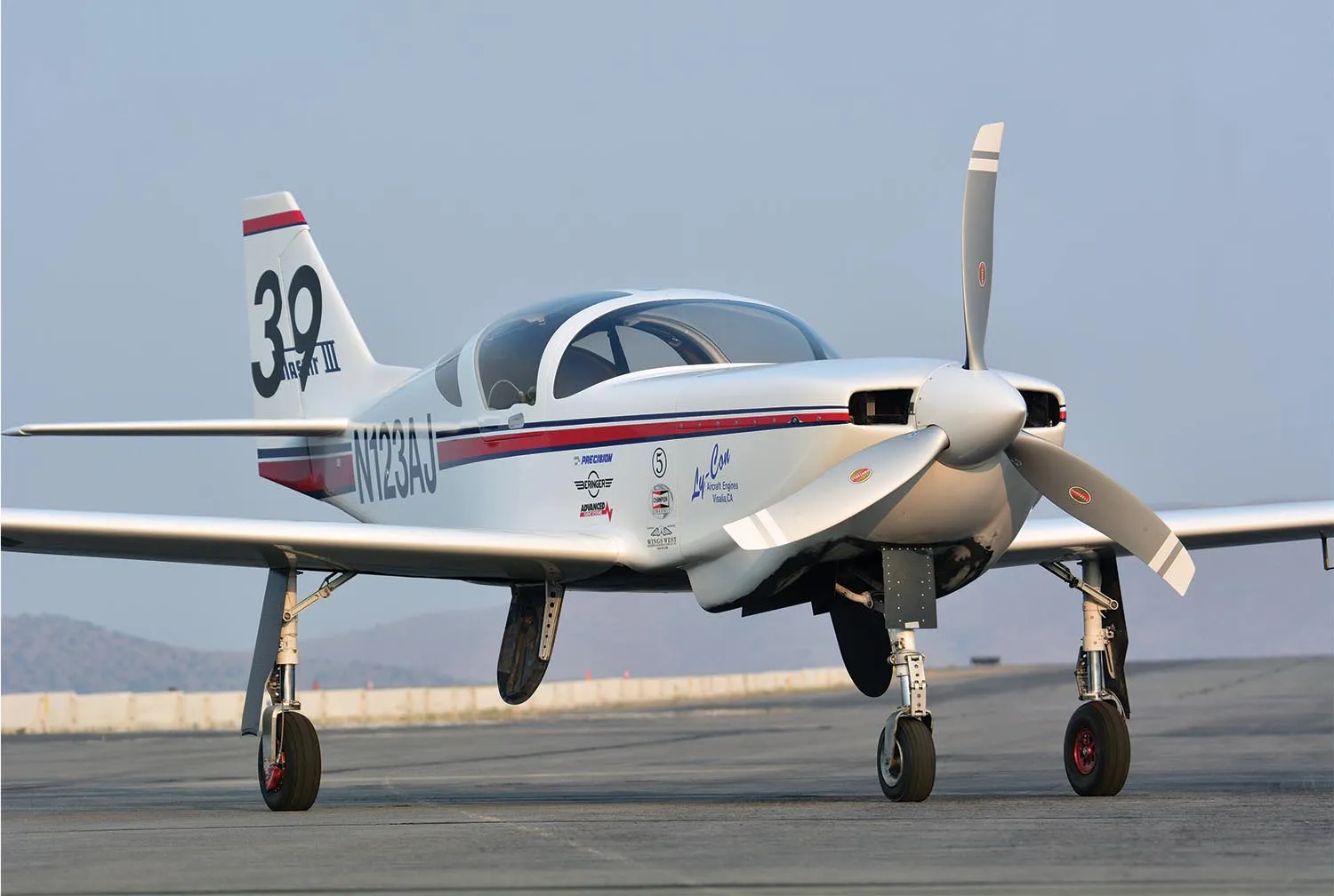
Jeff LaVelle

A Seattle native who never left, there isn’t much aviation predestination in LaVelle’s background. Neither parent was a pilot or worked in aviation, other than his dad built and flew U-control balsa-and-tissue airplanes. As for schooling, Jeff laughs, “the school of hard knocks…I think I drove past a college once.” Instead he latched onto machining in high school, progressively turning that talent and experience into owning a series of machine shops, some rather large, before retiring to commercial real estate.
Like many, Jeff had a passing interest in airplanes but found motorcycles a more accessible and engaging passion, especially dirt bikes. “I had a bunch of them,” he says, and was neck deep in wrenching and racing them (and is still riding). Busy with work and life, Jeff didn’t have any money for airplanes as a young adult.
But in the latter 1980s he was constantly driving by Paine Field, as his machine shop was located next to the airport, and his customers were aerospace companies. And he was eyeing the Cessna 150s and such that were around in those days because they looked kind of fun. It took a few years and growing success in business but stressed by work and an ongoing divorce he impulsively blurted, “Oh, screw it!” during his commute and steered into the FBO’s parking lot. It didn’t take more than a few lessons in a little Cessna for Jeff’s initiative and performance lust to kick in. “So I bought a Mooney 201.”
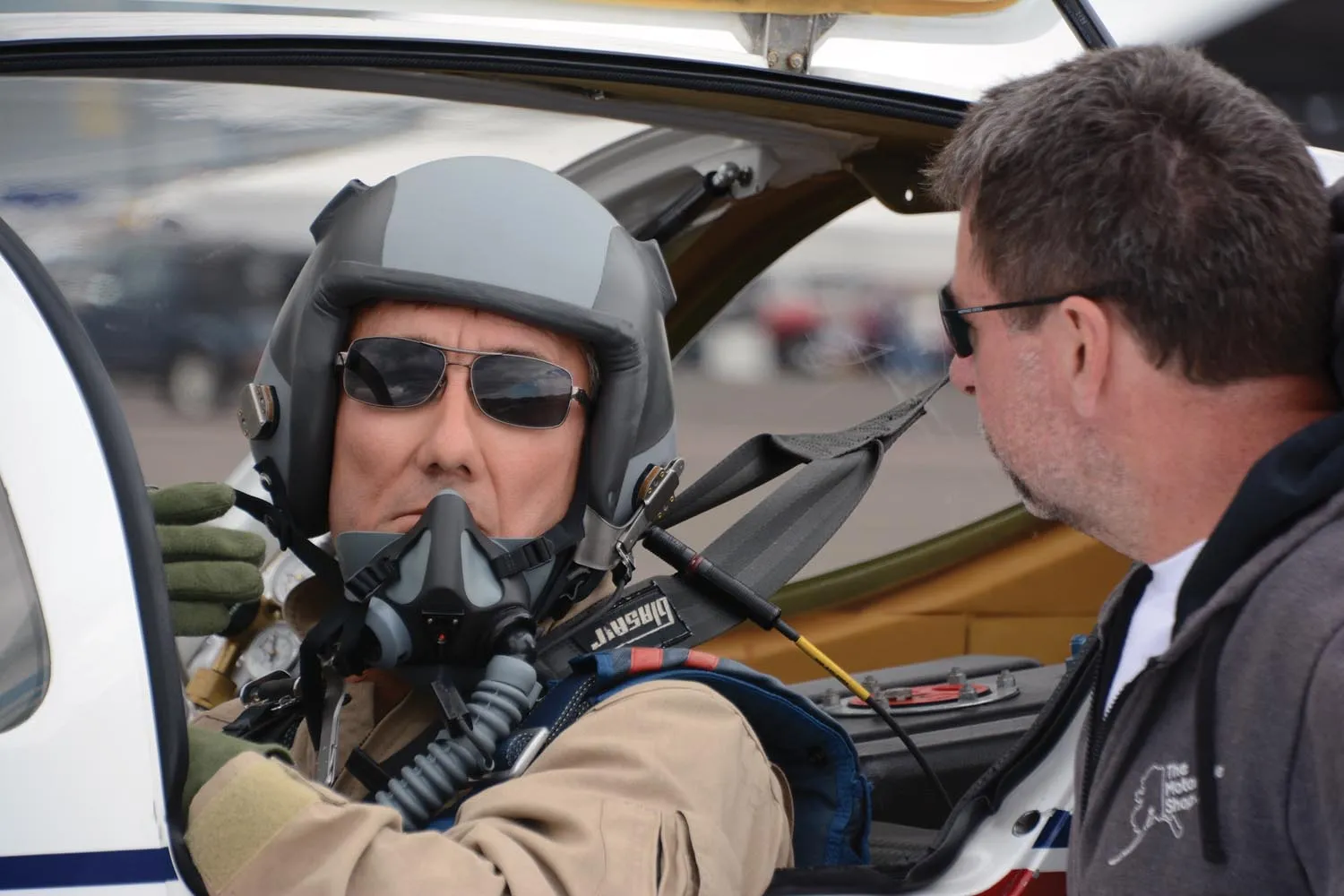
The complex speedster required a new instructor—Jeff was still working on his private ticket—which led him to Bob Chase, an ex-Navy Corsair jockey. “He couldn’t hear very well,” says Jeff, “but he had all the skills he’d never lost.” We suppose drumming around behind a Pratt & Whitney R-2800 really would keep you on your toes—and your ears ringing.
After flying the Mooney for maybe five years—Jeff is too engaged in the present to keep a diary of the past—he ordered his Glasair III kit, the same airplane he’s racing today. “There was no Sport class racing then or it was just getting started, so I didn’t build the plane to race it. I wanted it because it was small, aerobatic and fun looking.”
While the Glasair was under construction Jeff, no doubt gnawed by a racer’s need to keep moving, also bought a Decathlon to horse around in and, like a proven planeaholic, he still has it. Still not sated, Jeff also bought an RV-4 and fell in with the Black Jacks, a regionally famous formation flying group working out of Arlington, Washington. Jeff cites his time with the Black Jacks as fundamental to building his airmanship and professionalism due to the large number of battle-hardened Vietnam-era military vets running the show. “They’d just love to kick your ass,” says Jeff about the Black Jack culture. “I can’t tell you what an opportunity that was.”
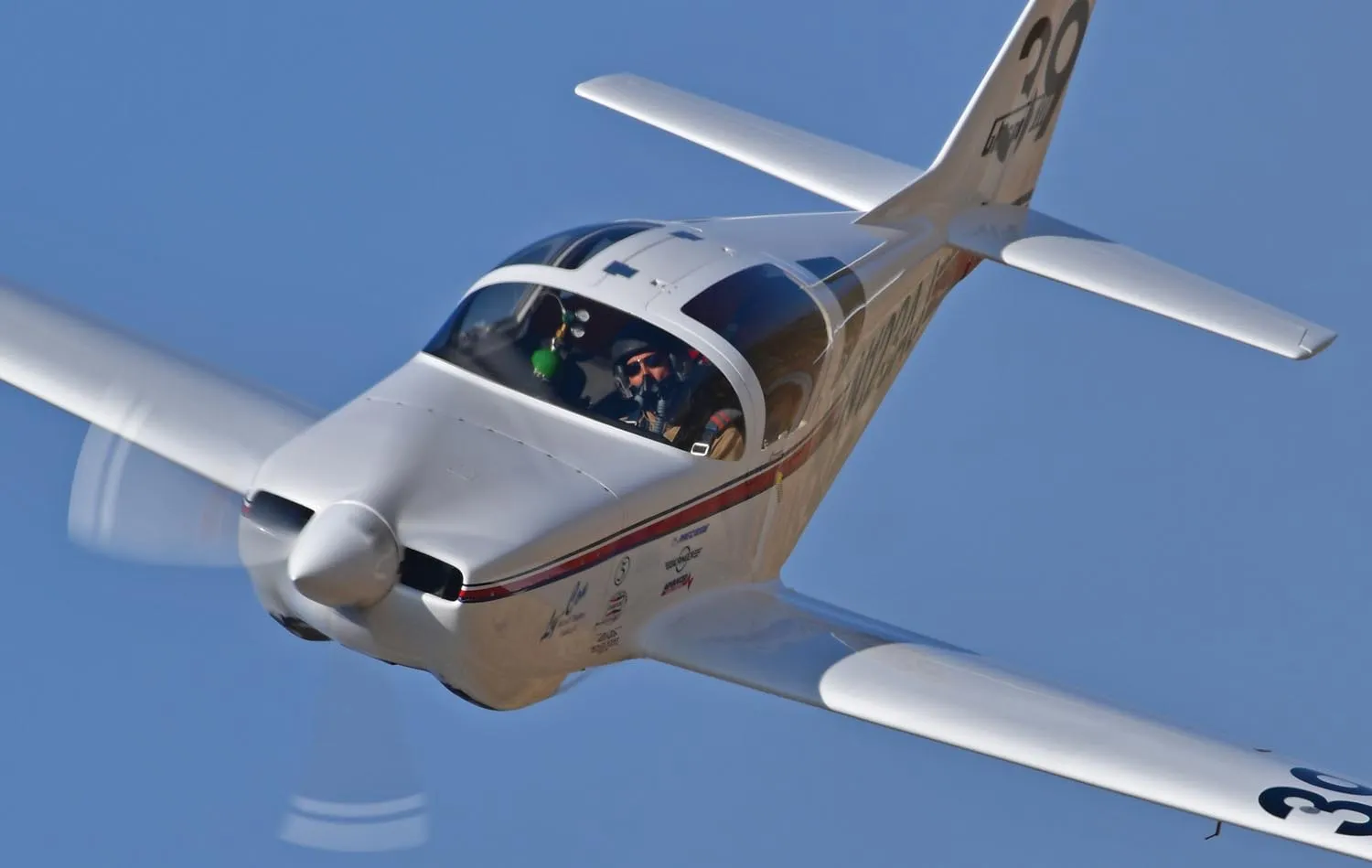
Race 39
Built with low weight and maximum performance in mind, Jeff’s Glasair is a product of his motorcycle racing mindset, even if it was intended for general duty, not air racing. Constructed via Glasair’s builder-assist program, his plane started with kit purchase in May 1998 and took only about a year and a half to completion, sans paint. Although Jeff was a frequent participant at the Arlington build center, “Jim Muldoon, the leader at Glasair’s assist program, built the fuselage and did the final assembly,” says Jeff. “I’d go up there and he’d laugh at me because I was chasing all the details.” The Glasair shop was a laid-back, fun-loving place, resorting to the occasional tape ball fight, says Jeff, who’d interrupt with his hard-core dirt bike racing mindset. Sweating weight details, he played the concerned customer. Or, as Jeff put it, “They thought I was a lunatic.”
While the fuselage was going together in Arlington, Ted Backus of Emerald Aircrafters in Troutdale, Oregon, built the all E-glass wing. This is an involved task because of the large number of parts the builder actually lays up, along with the responsibility to square them into a straight wing. At least the design is straightforward, with the spars and ribs taking shape as foam core and E-glass sandwiches with vinyl ester resin. But by today’s standards there’s plenty of hand fitting required to arrive at a straight, untwisted airfoil. It’s also worth noting that if such slow-build kits take time and build skills, they also give the builder more control over the finished product. In Jeff’s case that meant an emphasis on stopping weight creep.
Glasair shipped wing kits with the full-span, one-piece main spar built and bonded to the lower wing skin with the rest done by the builder. Thus, the builder’s critical first task is to construct a full-span table to serve both as a workbench and jig for the one-piece wing. As the table determines many wing characteristics, including dihedral and washout, it has to be exact. In practice that means a good amount of measuring, shims and tweaks until it’s right.
Rib formation begins by cutting out paper patterns supplied by Glasair and bonding those to whatever rigid material the builder chooses. This produces the stiff templates used to cut out the foam cores, which are then glassed over to make a rib, and then are finished with the addition of separate rib caps. Once these ribs and the rear spar are glassed into the wing they’re followed by precisely fitting the upper skin to the rib caps via numerous trial fits. Gaps between the rib caps and upper skin are checked with clay while temporarily laying on the upper skin. This reveals the high and low spots, which are either sanded or built up with micro or flox. As the wing is wet with fuel, there is the added issue of sealing the fuel bays from the dry areas. Jeff added to this by closing out the aileron bays for extra tankage near the wingtips. His wing holds 33 gallons of fuel per side.


Finally, the big day came when the upper skin was bonded to the wing assembly, closing the entire wing. This involves wetted, heavy, thick structural cloth along with a lightweight top skin. As the final skin goes on it’s a blind job as the skin covers up the structure. Not only is getting the wing’s top skin accurately placed critical for achieving the best wing shape possible, it’s also a difficult step requiring “a lot of touch labor and eyeball…it’s a craftsman thing to put this on correctly,” says Jeff. “You’ve got to make it perfect the first time because it’s a done deal” once the upper skin has bonded in place.
When it was time to close out his wing Jeff brought Jim Muldoon to Emerald Aircrafters alongside Backus, a bit of dirty pool as Jeff figured having two principal builders on hand would spur each to their best and thus produce the lightest, strongest, straightest and smoothest wing. It seems to have worked.
Once together in early 2000, Jeff flew his Glasair for a couple of years in primer behind a stock 300-hp, IO-540 Lycoming. From the first flight Jeff was pleased to find he had achieved his goal of building an exceptional Glasair III airframe. Crediting the main builders, Backus and Muldoon, Jeff found his plane just a little bit lighter and a touch faster than other Glasairs he came across. “It’s above average speed-wise,” he says. “It’s lighter and straighter…a little better than average.”
While enjoying his new go-fast machine, Jeff found himself assisting an Unlimited air-racing team based nearby. He sped parts from Seattle to Reno during the Pylon Racing Seminar, and there he saw the Sport class in action. You can guess what happened next.

Race Power
Jeff’s first Reno race was in 2007. He ran his stock, naturally aspirated 540 Lycoming, giving us an accurate baseline on what a stock Glasair III can do around Reno’s pylons. The effort netted an 11th-place qualifying speed of 292.193 mph and a sixth-place finish in the Sport Gold race at 283.251 mph.
This was one of the four years where the Sport racers were broken into Sport Gold and either Sport Super Gold in 2007 and 2008 or Super Sport in 2009 and 2010. Thus, for comparison we’ll note Jon Sharp qualified his twin-turbo Nemesis NXT first at 387 mph and won the Sport Super Gold race in 2007 while Jeff was puttering around at 292 mph.
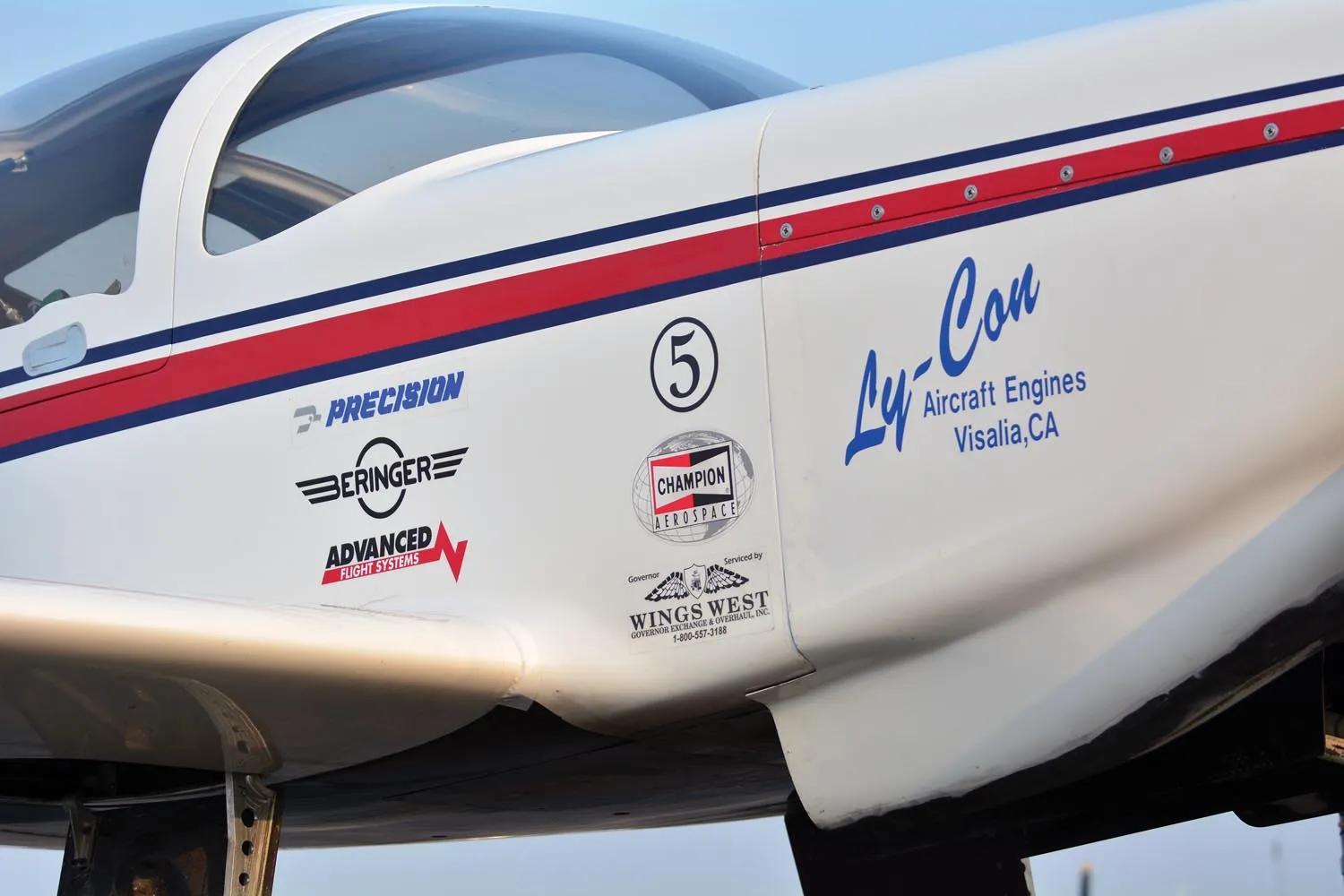
Clearly needing turbo power, for 2008 Jeff’s then crew chief Grant Semanskee “bought a cheap engine out of Spokane,” recalls Jeff. A company was converting Piper Mirages to PT-6A power and “were almost giving them away,” LaVelle notes. This stone-stock Lycoming TIO-540-AE2A angle-valve engine was rated at 350 hp (for five minutes) using 42 inches of manifold pressure. What do you think—did Jeff run it longer than that?
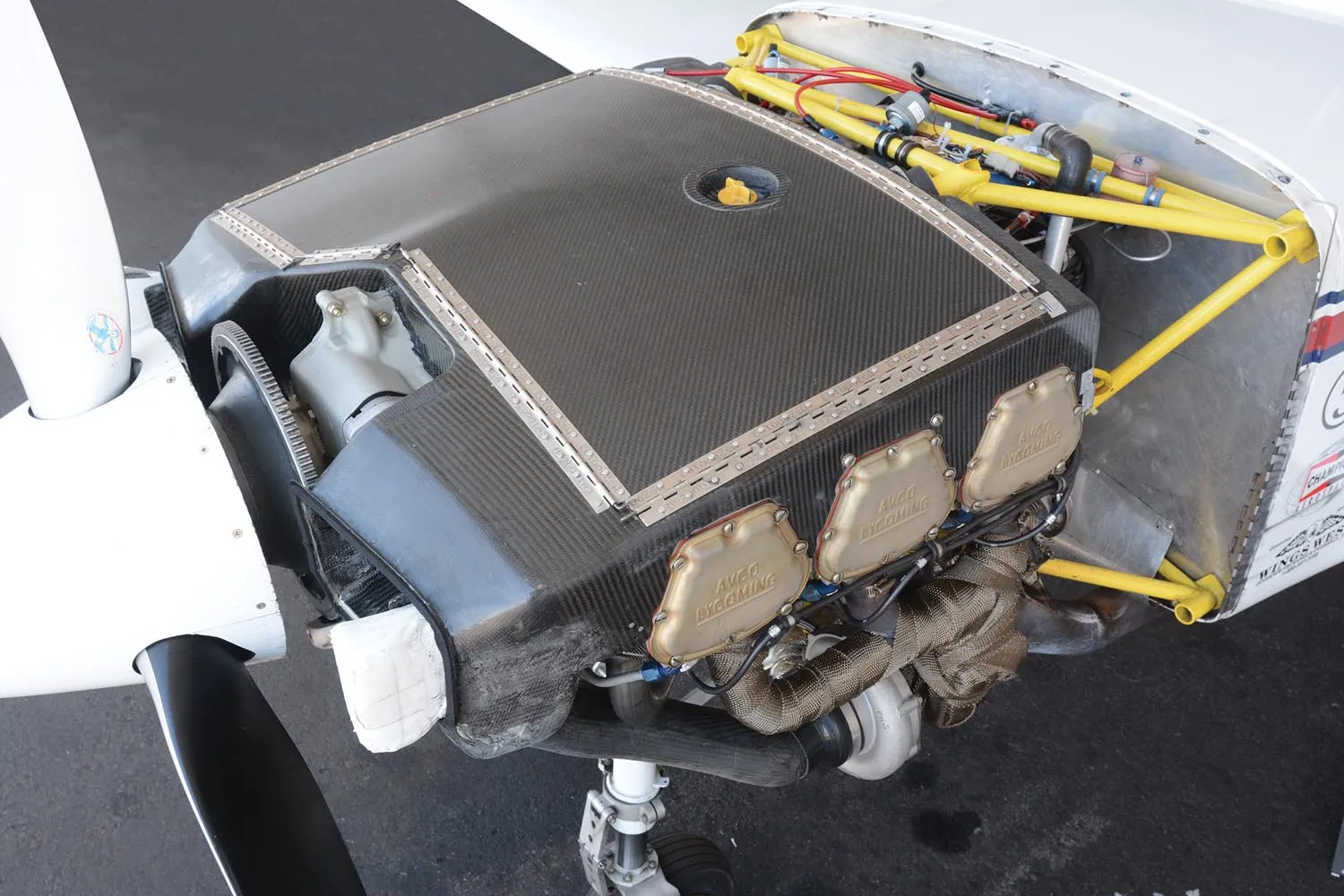
For packaging the intercooled Mirage engine in a Glasair, a new intake plenum was built by John Kerner while Bruce Hamilton fabbed a new carbon fiber cowling. Jeff said the combination “was fine…a good starter package” with its stock 7.3:1 compression ratio and running 100LL fuel. In 2008 he “got into first but detonated, maybe an injector clogged. I had just passed Lee Behel and was going to get my watch (Reno has awarded custom Breitling watches to race winners for many years) and then I detonated a jug and had to land the airplane.”

Now past the getting-started phase, Jeff’s next move was to call Ken Tunnell at engine shop Ly-Con to have him prep the Lycoming. This confederacy of Ly-Con building the core power section out of stock Lycoming engine cases, crankshafts and angle-valve jugs (with plenty of Ly-Con speed secrets) coupled to Jeff’s turbo and systems installation has remained his power source to this day. Ly-Con has Jeff ship them the core engine every year for inspection and freshening, a process that actually shows little wear (unless a connecting rod is sticking out) but lately includes a brand-new crankshaft out of hard-earned caution. That’s what running an engine at three times its rated power does to durability.
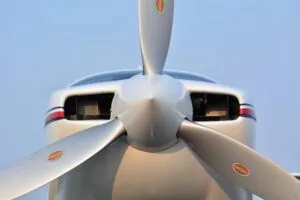
In 2008 and ’09, these were 540-cubic-inch engines but since 2010 they’ve been 580s. As usual, Ken Tunnell just goes “aw shucks” when pestered about how much power the deep-breathing 580 makes. In truth he doesn’t really know. “My dyno only reads to 1200 foot-pounds of torque and Jeff’s 540 pegged my dyno way below race power. Now he’s running a 580.” Like other Sport racers, Jeff says his current engine makes 850 hp or so. It could be over 900 hp but whatever the number is, it’s stout and a real accelerated wear test of everything inside it.
As for the 580 internals, they are mainly stock Lycoming bits augmented with Ly-Con’s cryogenic heat treatment, anti-friction and heat-barrier coatings, a custom-grind camshaft, CNC-ported heads, an O-ring case treatment and a subterranean 5.8:1 compression ratio via Ly-Con’s custom NFS pistons. The super-low compression greatly supports elevated manifold pressure while racing, but makes for a lazy dog with a fuel drinking habit at low or no boost. A fly-to-breakfast engine this is not, even if Tunnell says it’s “basically a drive-around-the-block engine,” when referencing its lack of exotic high-rpm parts.
ADI
Jeff followed the lead of many Unlimited and other Sport Gold racers in 2021 by removing air-to-air intercoolers in favor of increased ADI flow. ADI—anti-detonation injection—is a 50/50 water/methanol mix sprayed into the intake manifold. As the water evaporates it provides a powerful cooling effect that keeps combustion temperatures from spiking. It provides more combustion cooling than intercooling with much less aerodynamic drag.
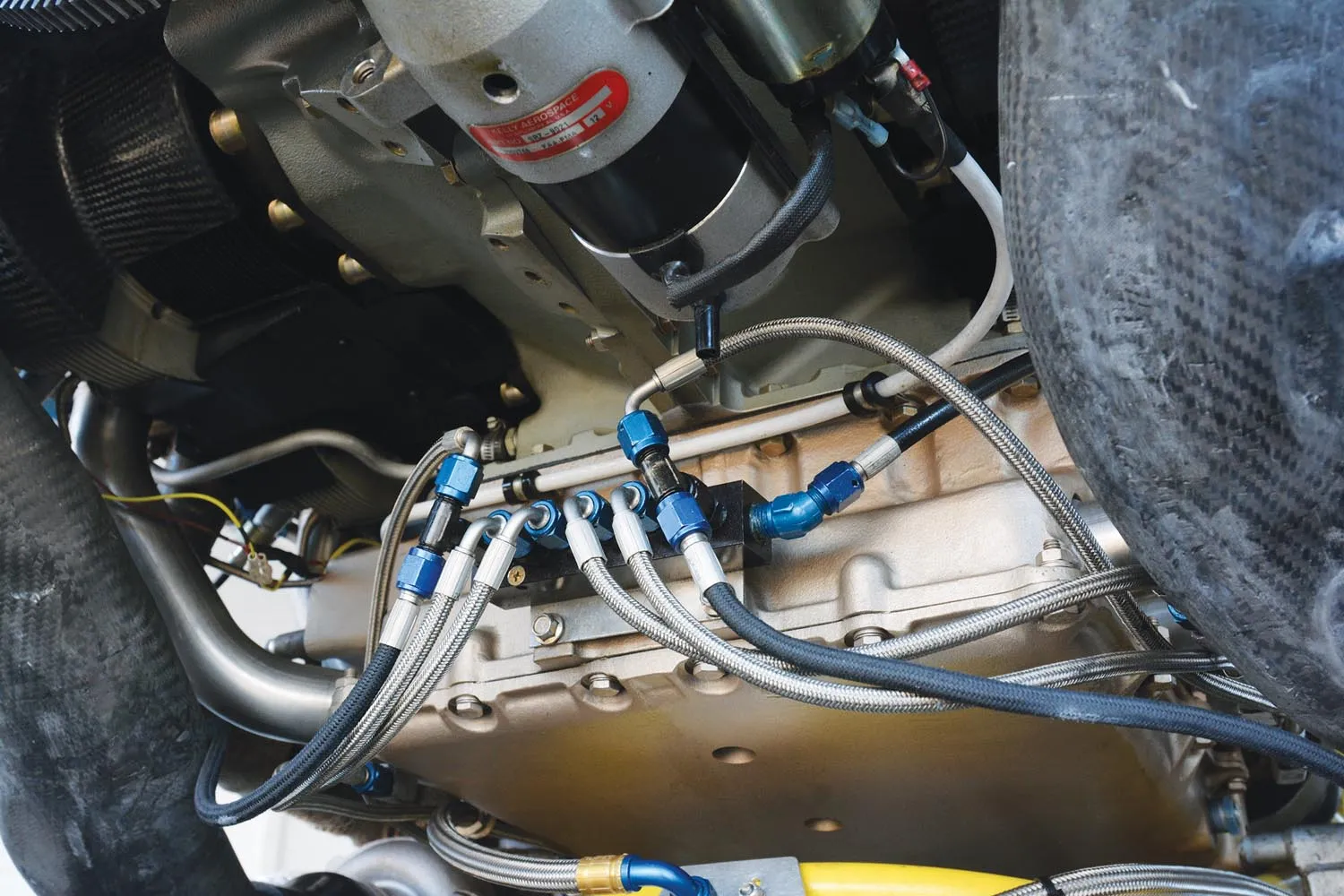


Originally Jeff had a single ADI lawn sprinkler in the intake manifold but found it gave poor distribution among cylinders and was essentially impossible to tune. So, from a central ADI manifold he plumbed “water” lines to each intake runner, giving six tunable nozzles for much more efficiency. Two other lines feed the turbo outlets for additional general cooling as well. ADI fluid is kept in a 5-gallon tank in the cockpit for weight and balance reasons. It sits next to a 12-gallon spray-bar tank that spritzes distilled water onto the outside of the engine and oil cooler to increase heat rejection via evaporation. Like the ADI tank, the plastic spray bar tank is, “straight out of the Summit [Racing] catalog.” Distilled water is used in both to reduce nozzle clogging and water spots all over the engine compartment. “We go to Walmart and clean the shelves off,” says Jeff when asked where he gets his water.
Fuel System

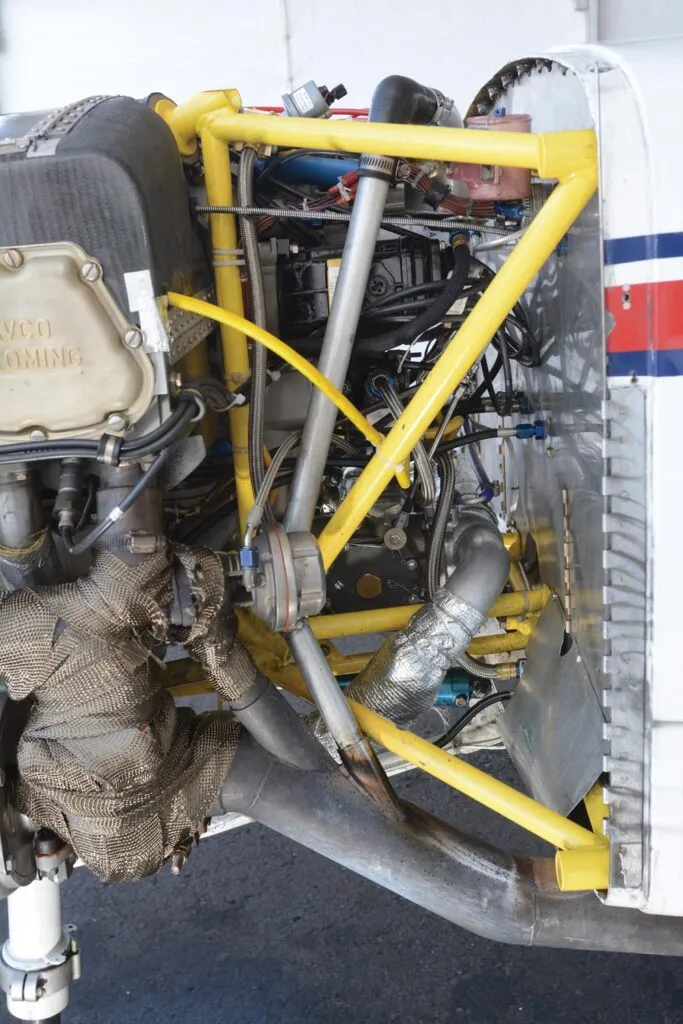
To get sufficient fuel flow and control over 65 inches of manifold pressure, racers have successfully abandoned mechanical fuel injection for electronic injection (and ignition), mainly from SDS and EFII. Busy with other issues and an old-school guy at heart anyway, so far Jeff has stuck with Bendix mechanical fuel injection modified by Precision Airmotive in Arlington. Jeff Sitter at Precision has specified an RSA-10 fuel servo, along with a Romec fuel pump running a nominal 90 psi but sometimes hitting upward of 100 psi. That’s nearly three times the stock pressure. This extra pressure is used to both supply more fuel and overcome the boost pressure in the intake manifold. The rear-entry fuel servo layout dates from the original Mirage engine, with the servo rotated 180° to ease packaging the throttle linkage and fuel lines, which feed larger injector jets.
A fuel system improvement came during Jeff’s major landing gear upgrade in 2021. This required removing the wing, allowing enlarging the tank-to-fuselage fuel lines from 3/8- to 1/2-inch diameter plus replacing the stock Glasair 90° bulkhead fittings (where the fuel lines pass from the wings to the fuselage) in favor of mandrel-bent tubing. Seemingly minor, this change eliminated a fundamental stumbling block to achieving sufficient fuel flow.

Also of note, the stock Glasair III fuel system uses two wing tanks, plus a header tank in front of the instrument panel. Not wanting a lap full of fuel, Jeff eliminated the header tank during the plane’s initial build, saying they tend to leak and make working on the avionics more difficult. Jeff has no preference which wing fuel tank he draws from while racing, even admitting that prior to enlarging the fuel lines he did race in the “both” position, a desperate move in a low-wing airplane as it might unport the fuel pickup. It never did and he now runs just fine off of one tank with the enlarged fuel lines.
As for the fuel itself, 100LL was good when naturally aspirated, but his minimum fuel for high-boost operation is the old 115/145 purple avgas, which VP Racing Fuel mixes for Reno racers. VP also developed 160-octane Strega fuel for that P-51 team in the 1980s and several teams run it today, including Jeff for 2023. And what’s “high boost?” At least 85 inches of manifold pressure—likely into the low 90s when pressed.

Ignition
What’s remarkable about Jeff’s ignition system is how stock it is: a pair of Bendix 1200 magnetos timed to 20° in deference to all that manifold pressure, igniting AC Delco twin-electrode iridium spark plugs. Jeff actually has had an SDS electronic ignition system in-house for several years, but wants to run it on a non-race engine first to learn its ways. He hasn’t had the time so far. One ignition curiosity is that the Unlimited folks say the Strega fuel rapidly eats the iridium off the ground electrode and they’re constantly installing new spark plugs. Jeff hasn’t had that issue and runs the same plugs all year. Must have something to do with the huge boost the Merlin boys run.
Wing and Gear Modification
If Jeff did everything he could during his plane’s build to ensure a perfectly formed wing, it was still a stock Glasair III wing fitted with slotted flaps and stock Glasair landing gear. As soon as he began racing the under-wing flap tracks had to go due to their great aero drag, so he bolted the flaps shut and cut off the flap tracks. No other changes were made to Race 39’s wing for years, but entering the COVID era Jeff was suffering gear doors hanging open and the easy fixes weren’t working. A solution came from an unexpected source, Robbie Grove at Grove Aircraft. Unexpected because Robbie and partner Jim Rust from Whirlwind Propellers are direct competitors to Jeff in Sport Gold, running their own very fast Glasair III. But if they’re competitors they’re also part of the tight racing brotherhood, and where Grove and Rust had borrowed many firewall forward ideas from Jeff, they were ready to reciprocate with Grove’s redesigned Glasair landing gear.

Recognizing the stock Glasair III gear was unsuitable at high speeds, Grove had already developed and installed on his Glasair racer a totally new gear door and gear actuation system, retaining the stock Glasair gear legs and not much more. Grove’s goal was to completely enclose the gear when retracted—stock Glasair practice exposes some of the main gear tires—using flat, flush, tightly closed doors held shut with hydraulic pressure. This requires new half forks, hydraulic cylinders, sequencing valves and supporting pieces. But that’s just half of it as the Grove system interferes with the flap linkage and even the aileron linkage. Thus, the flaps must be abandoned and an all-new control system fitted, starting with the control stick, torque tube and extending all the way to a reversing bell crank in the aft fuselage for the elevators!
Grove built the new system for his and Jim Rust’s racer with no intention of offering it as a kit. But they had a few spare hydraulic cylinders (Grove makes his own) and he gave these to Jeff, along with sketches, tooling and other bits so he could replicate the system in Race 39. Installing the Grove gear should take place during the initial build before the wing is joined to the fuselage, not on a flying Glasair. But with the 2020 races canceled due to COVID, Jeff opted to take the huge step of separating the wing from 39’s fuselage to install the Grove gear. With a weary tone Jeff says the wing and gear job, “is a horrifically involved process. The [new] actuator requires a whole new flight control system, and a new fuel system to clear the flight control system. The time to do this is when you’re building; to convert an existing wing involves a lot of demolition. I did a lot of research before we just started hacking away at stuff, but man, I could have built a whole RV.” Yes, but the Grove gear works flawlessly.

While he was there, Jeff could also tend to other details. The bolted-shut flaps were removed and the area glassed-in using hot-wired foam shapes provided by Grove. Also, the stall strips were sanded off and new root fairings developed. Barely finishing in time for the 2021 races, Jeff was pleased to find his plane flew better than ever and to have his gear door issues a thing of the past. He was even more pleased to win convincingly—over Grove and Andrew Findlay—that year, too.
Continuous Improvement
A casual observer might think Race 39 hadn’t changed in years as it’s always worn the same paint job and has seen no highly visible changes such as wing clipping, but Jeff says it’s changed “radically” since he started racing it. Of course there have been many engine improvements over the years, plus the Grove landing gear, and these are not visually apparent from the grandstands.
But what we’ve been missing is Jeff’s tireless pursuit of weight reduction. Built lightly from the beginning, Race 39 has not seen the usual weight creep of developing airplanes thanks to Jeff’s constant efforts. Replacing aluminum and E-glass with carbon fiber is one reason. The cowling, wingtips, gear doors, seatback and belly pan have all gone to carbon, as have other hidden parts. As Jeff was the first Sport racer to dedicate his airplane to racing and give up sport flying it the rest of the year—a highly desirable move almost all his competitors were late to adopt themselves, if ever—this has enabled less weight and arguably greater safety. The nav lights and wiring were removed, the instrument panel pared to the minimum and the cockpit stripped to single-seat utility, all weight-saving moves. Ditching the intercoolers was another big help, as was closing out the flaps, which eliminated the flap structure, hinges, linkage and body filler used to fair in the bolted-shut flaps.
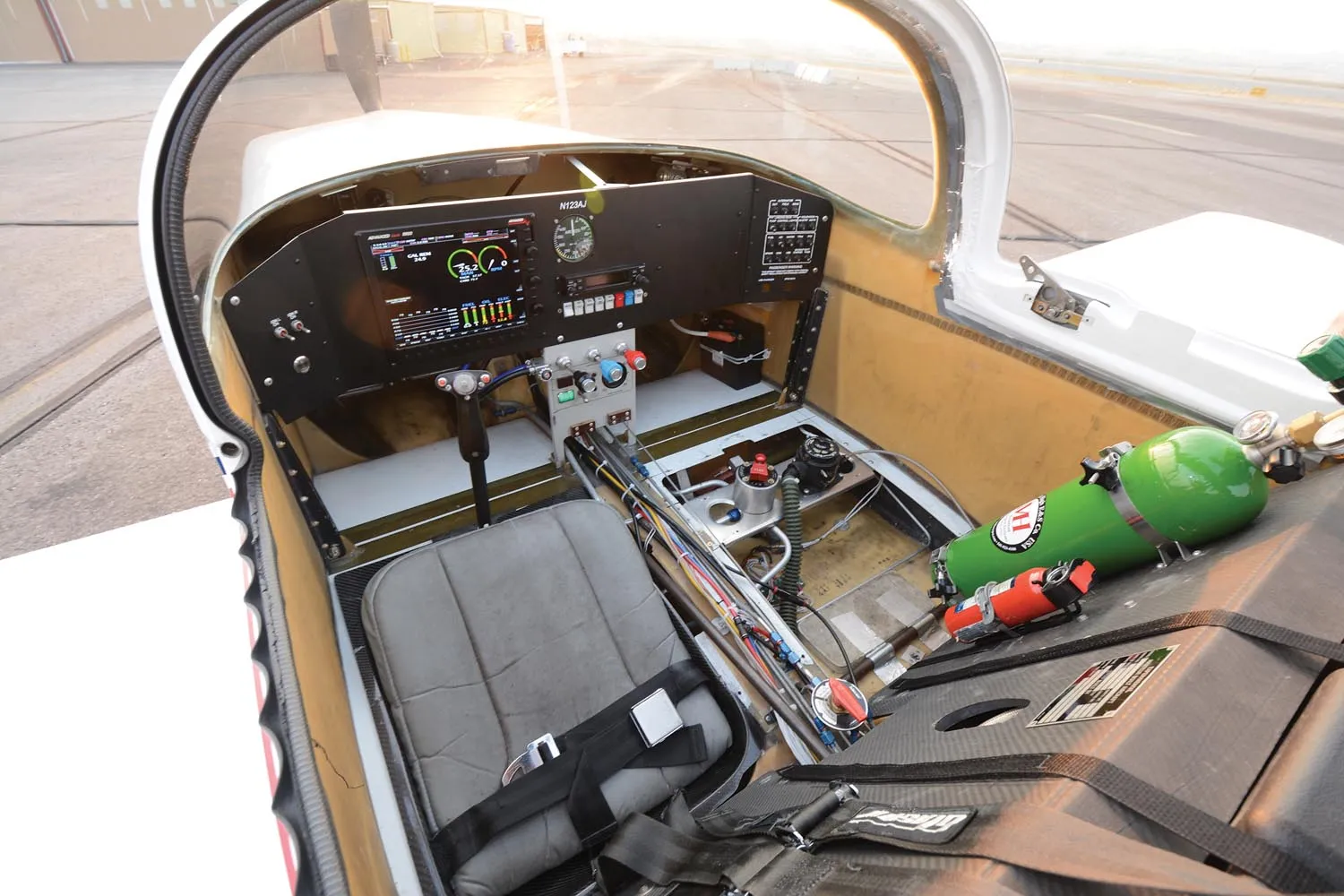
Even Jeff has been amazed at how lightweight his plane has become. When first turbocharged it scaled just over 1700 pounds, but “after COVID and the big mods I thought it might be 1700 pounds and under, but wow, it was 1570 pounds without the water tanks. I was really wondering after glassing the flaps [shut]; before it was always pulling right, but after the wing mod it felt really light and flew straight.”

2023 & Beyond?
With one more Reno race to run, Jeff is still improving. He’s working on downsizing his engine-cooling exhaust tunnels and trying new tailpipes. Different brand turbo wastegates are going on—one failed last year, causing him to mayday out of the Gold race—and there is the usual engine overhaul at Ly-Con yet to go at our deadline. The plane will definitely be a contender at the last-ever Reno speed fest.
After that, the entire sport of air racing faces an unknown future. The Sport class is working on new races around North America—see the Rear Cockpit column—and the Reno organizers are searching for a new venue. Whether these stimulating, expensive, all-out Sport Gold contenders can survive the new order remains to be seen. But, somehow, we don’t think we’ve seen the last of Jeff or heard Race 39 making that delicious, deep thrumming moan as man and machine zoom by at 400-plus mph.
Jeff LaVelle Race 39 Glasair III
- Estimated completed price: $500,000
- Estimated build time: 3000 hrs
- Number flying: 1
ENGINE
- Powerplant: Ly-Con Aircraft Engines TIO-580-EXP
- Horsepower: 850 hp @ 90 inches/2800 rpm (est)
- Torque: 1594 ft-lb (est)
- Cooling: air/oil/spray bar water/ADI/magic1
- Fuel delivery: Bendix/Precision Airmotive mechanical constant-flow fuel injection, RSA-10 fuel servo, 100 psi
- Ignition: Bendix 1200 mags and harness; AC Delco twin-electrode iridium spark plugs;
20° timing - ADI: 5 gal. 50/50 water/methanol, 1 nozzle per cylinder and turbocharger
- TBO/Inspection: (race week & ferry combination) 1 race, 50 hrs
- Propeller: Hartzell three-blade, 75-in.-diameter aluminum constant-speed
AIRFRAME
- Wingspan: 23 ft
- Wing area: 81.0 sq ft
- Wing loading, gross weight: 29.62 lb/sq ft
- Fuel capacity: 66 gal
- Maximum gross weight: 2400 lb
- Ready to race weight: 2100 lb
- Empty weight: 1590 lb
- Useful load: 810 lb
- Full-fuel payload: 414 lb
- Seating capacity: 1
PERFORMANCE
- Maximum speed, straight line est.: 445 mph @ 5000 ft
- Maximum average speed, 7.91-mile oval: 410 mph2
- Cruise: 300 mph @ 10,000 ft, 22 gph
- Maximum rate of climb: 2000 fpm, typical; 5000+ fpm max
- Stall speed (landing configuration, no flaps): 89 mph
- Stall speed (clean): 90 mph
- Takeoff distance: 2000 ft
- Landing distance: 5000 ft (normal operation w/no braking); 3000 ft w/heavy braking
- Normal race distance: 6 laps of 7.91-mile course/47 miles/7 minutes
1A bucketload of laborious testing getting the air cooling path figured out.
2Official RARA speed calculated using pylon-to-pylon method; actual speed higher. Specifications and pricing provided by LaVelle Racing.

LaVelle Sport Racing History
| Year | Qualified | Qual speed, mph | Finish |
|---|---|---|---|
| 2007 | 11 | 292.193 | 6 |
| 2008 | 6 | 335.18 | DNF |
| 2009 | 1st Sport | 357.863 | 4th Sport, 8th Super Sport Gold* |
| 2010 | 1st Sport | 362.481 | 1st Sport, 4th Super Sport Gold* |
| 2011 | 1 | 396.73 | no race, accident |
| 2012 | 1 | 395.872 | 1 |
| 2013 | 1 | 403.059 | 1 |
| 2014 | 1 | 409.812 | 1 |
| 2015 | Did not race | ||
| 2016 | 1 | 403.411 | 1 |
| 2017 | 1 | 401.004 | 1 |
| 2018 | 1 | 407.022 | 2 |
| 2019 | 2 | 396.886 | DNF |
| 2020 | No racing, COVID | ||
| 2021 | 2 | 392.791 | 1 |
| 2022 | 1 | 402.491 | DNF |
Sport Class Champs
| Pilot | Championships |
|---|---|
| Jeff LaVelle | 7 |
| Darryl Greenamyer | 4 (+5 Unlimited) |
| Jon Sharp | 4 (+11 Formula 1) |
| David Morss | 3 |
| Andrew Findlay | 2 |
| John Parker | 2 |
Jeff’s Other Hot Rod
Recently Jeff bought a box-stock P-51 Mustang, Sweet and Lovely, and he makes interesting comparisons between it and his racing Glasair III. For starters, he likes to sport fly the Mustang but not the Glasair. “I don’t sport fly [Race 39]. The P-51 is way cheaper to fly than this racing Glasair. Think of the $%#! you go through to pull the engine so Kenny [Ly-Con] can look at it every year. It makes the P-51 look like a 182! There is a point there when you reach the ‘Oh screw it’ attitude and you go for the P-51. I feel way safer flying that thing. I’m used to flying these racing Glasairs where the engine blows up every 10 minutes…deadstick landings are getting kind of old. So the 51 is more like a daily driver. Compared to a racing Glasair, a P-51 is quite economical. When you look at the whole thing it’s an investment.”
Photos: Tom Wilson and Tim O’Brien (action).
This article originally appeared in the July 2023 issue of KITPLANES.
For more great content like this, subscribe to KITPLANES!



































